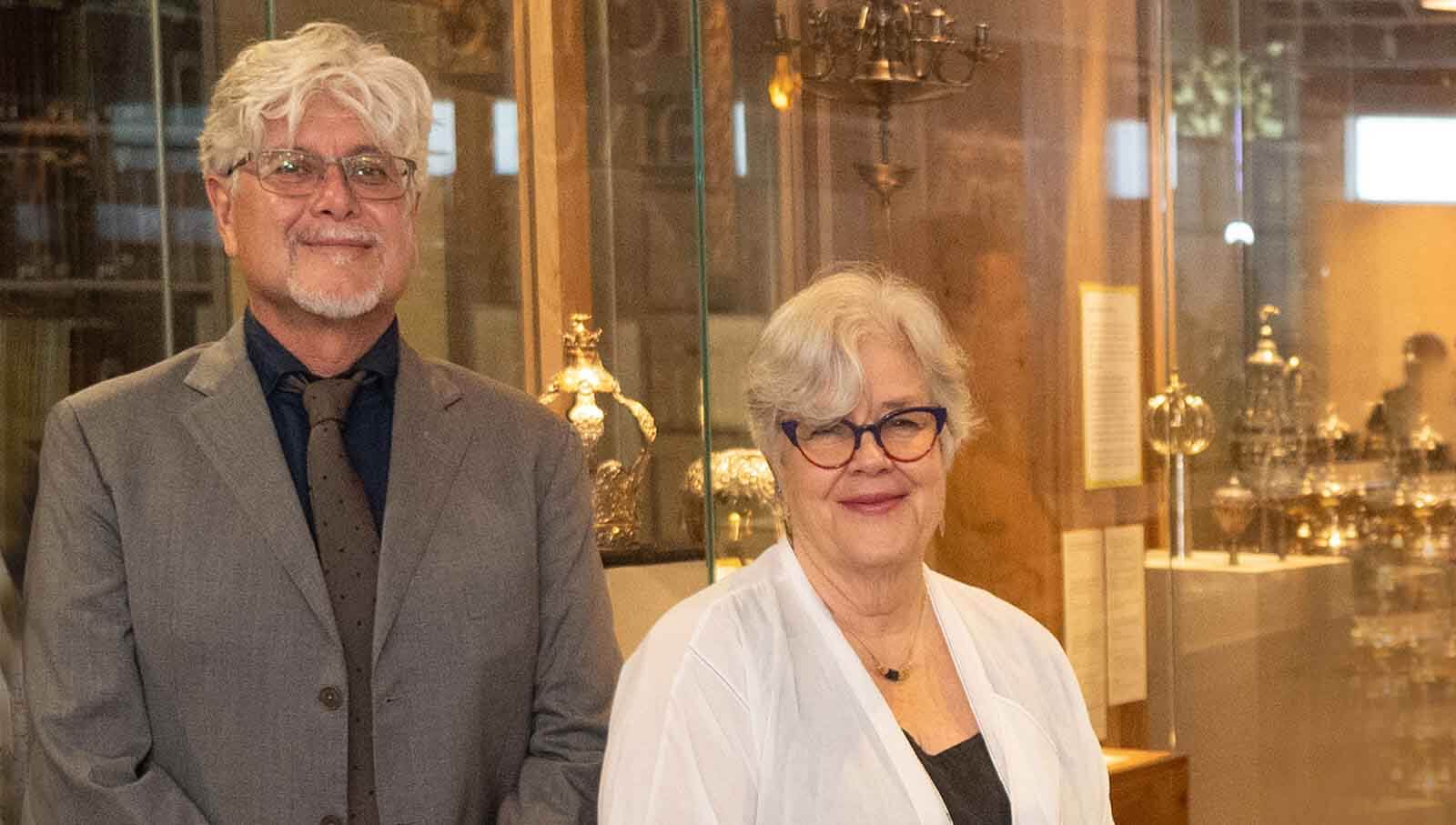News
Sephardic Horizons – 07.15.2004
July 15, 2004
Sephardic Horizons: on view August 30 through July 15, 2005
During centuries of spiritual, intellectual, and artistic flowering on the Iberian Peninsula—Sepharad, in Hebrew—Jews coexisted creatively with surrounding Christian and Muslim cultures. This fertile interaction is reflected in Sephardic contributions to philosophy, science, poetry, and religious law and literature, and finds visual expression in the forms and patterns of Sephardic art.
Sephardic music, cooking, and literature have claimed much attention in recent years. Few presentations, however, have reflected the breadth of the Sephardic experience, the enduring legacy of their history, and the extent of their contribution to modern culture. The encyclopedic nature of the Magnes’ collections provide a perfect opportunity to present Sephardic Horizons, a year-long exhibition and project presented by the Judah L. Magnes Museum, along with its cultural partners.
After their expulsion from Spain and Portugal in 1492, Iberian Jews fled south and east to the lands of the Ottoman Empire, north to Italy and Amsterdam, and by the 17th century to the New World. Throughout their dispersion, they continued to cherish the music, art, and language of medieval Christian and Islamic Spain from their years on the Iberian Peninsula.
Objects on view in Sephardic Horizons range from a 14th century Hanukkah lamp influenced by Islamic as well as western European architecture to contemporary photographs by Montreal photographer D. R. Cowles that evoke the vanishing beauty of Jewish life in Morocco and Egypt. Other graphic works include an early 18th century print by Bernard Picart depicting the dedication of the Portuguese synagogue in Amsterdam c.1730 that is part of a series by Picart documenting the practices of Sephardic Jews in Holland. From the turn of the 20th century there is a sampler embroidered by a young Sephardic girl living in a waning Dutch community in Paramaribo, the capital city of Surinam. Additionally, there are costumes, jewelry, books, and Jewish ritual objects from Italy, Egypt and other countries in North Africa.
In partnership with the Jewish Music Festival and Lehrhaus Judaica, public programs will emphasize the concept of “convivencia,” or “co-existence.” Historian Thomas Glick wrote that the cultural diversity of medieval Spain encouraged “convivencia,” which connotes “mutual interpenetration and creative influence, even as it also embraces the phenomena of mutual friction.” It is in this spirit that visual and material culture will be presented and discussed in Sephardic Horizons and related programs celebrating centuries of flourishing mutual influence.
The exhibition will also be augmented by scholarly presentations by graduate students from UC Berkeley and Stanford, culminating in a colloquium presented in partnership with the University of California on the Berkeley campus in May 2005. The presentations will address the broad spectrum of Sephardic culture, reflected in literature, arts, music, and theology.
Sephardic Horizons is curated by Elayne Grossbard, Judaica Curator, and Alla Efimova, PhD., Chief Curator.
Latest News
Keep Up-To-Date




